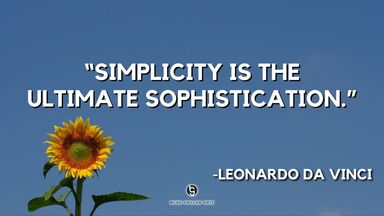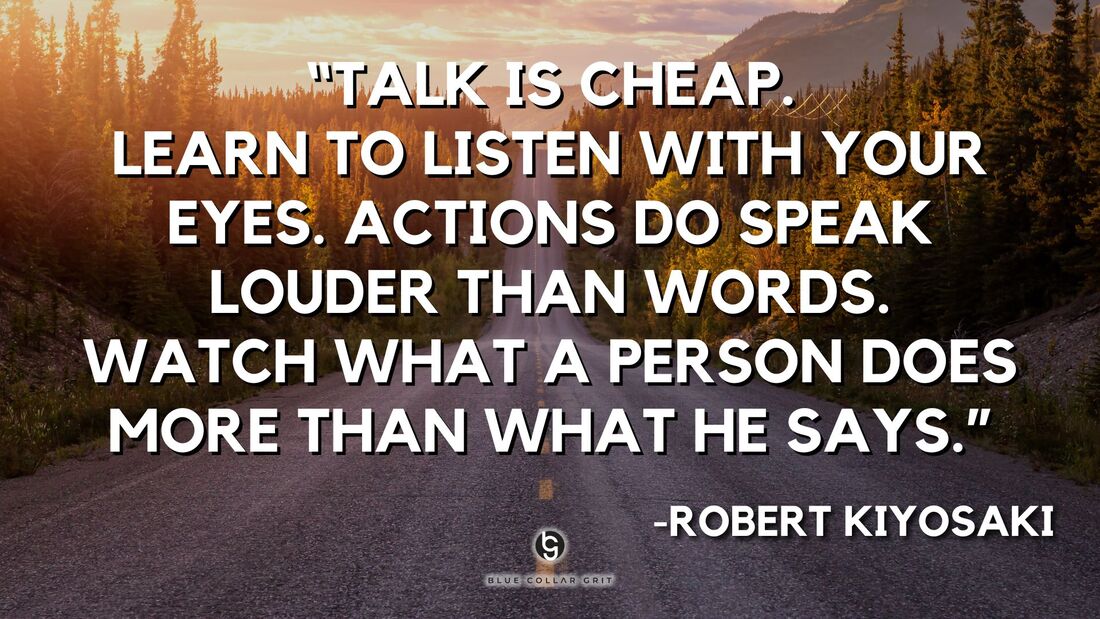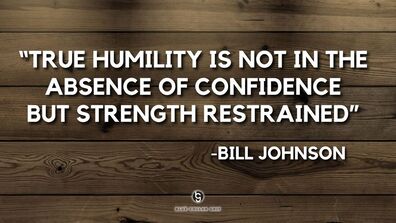Your Audience MattersAbout nine years ago we started the Team Leadership Group for captains of various school groups - sports teams, academic clubs, and various groups in the arts. We would meet once a week for about forty-five minutes before school. We covered a variety of leadership topics while also allowing students the opportunity to collaborate in order to solve issues they were facing on their own teams. It was great. Students opted into the group and were very engaged, curious, and helpful to their classmates.
At the prompting of administration the Team Leadership Group eventually turned into two elective leadership classes. While the semester courses go into much greater depth on many of the topics, the basic content being delivered did not change much. Unfortunately, the same can’t be said for the audience. For the first five years of the leadership class, students were very similar to the ones I observed in the Team Leadership Group - active, thirsting for the information on how to live and lead more purposefully and intentionally. But, of course, they chose to be there. In the last two years there has been a significant change in that desire to learn and want for the information. We now have more students simply taking the class for elective credit rather than a genuine interest in growing as a leader. They are existent and compliant, but certainly not compelled. The audience has changed - different passion, different intent. Why Should We Care? Our message as a leader is often much more like a dog whistle than a megaphone. We like to think everyone will get it if we just say it loud, or often, enough. But, the reality is only those that want and connect with the message are benefitting from it. In order to maximize our impact as leaders we either need to find the right audience or craft the right message - both are equally important, but the message is usually what gets most of our attention. The message is obviously critical and is the focal point for most leaders. We have been led to believe that if the message is crafted well enough and is inspiring enough, then the composition of the audience is virtually irrelevant. That’s not the case. Some people simply are not interested, see no value in it, or are not ready for it at that point in their life. In an effort to appease the audience, we usually revert to changing the message. And, though we should constantly be reflecting and evaluating the delivery and content of our message, the issue is not always found in our message. Sometimes the audience is the problem. “If you are talking to everyone, you are talking to no one.” The some messages we share will not resonate with everyone. Yet, we are offended when people don’t agree with us or even condemn our opinion. It’s okay. We share a message because we believe in it or we’ve witnessed the truth of it in our own life. Some audiences won’t appreciate our position. Some audiences will completely disagree with our position. And, some audiences won’t care at all what our position is. All of those are okay. We just need to find the right audience. The right audiences share our passion, desire to grow in the areas we are working in, and care deeply about the group. They don’t have to agree with everything we say and do; but they do need to care, have some curiosity, and desire growth. REAL TALK - Action Steps Of course, sometimes we don’t get to pick our audience. In those cases, the message needs to be crafted to appeal to that specific group. Although we rarely are in a position to hand-select our entire team, we will have opportunities to choose team members from time to time. Here are a few ideas to keep in mind in that selection process:
Alignment is critical in several aspects of life. Audience and message is one of those aspects. All messages are not for all audiences and all audiences are not for all messages. When leading we are looking for the pairing that offers maximum impact. Checkout Surrender the Outcome on Amazon and order The Score That Matters with Ryan Hawk & Brook Cupps. The latest blog from Blue Collar Grit can be found here!
1 Comment
Keep It SimpleOne of the more difficult aspects of coaching basketball is helping players understand, and embrace, their role on the team. It’s much easier in other sports like football, baseball, or volleyball. The position in those sports draw a fairly clear distinction in what a player should and shouldn’t be doing. The left tackle on a football team isn’t throwing passes and the quarterback isn’t usually running pass patterns.
That clarity isn’t as present in basketball. In the age of positionless basketball, centers dribble and guards post up, and everyone shoots threes! For the most part, everyone does everything. While this provides a different dynamic to a team, it also blurs the lines of duties and roles. And, not too many things are more detrimental to a team than blurred duties and roles. Sometimes it can be difficult to identify who has a full grasp on their role and who doesn’t, but the primary indicator is easy to find. We don’t need to ask questions or survey other people. We just need to know the answer to one question: Do they keep it simple? Why Should We Care? Consistently trying to do more than you are capable of doing is a crystal clear indicator of a blurred role. By trying to do more, they are demonstrating their lack of acceptance for their current role and what the team needs them to do. Beyond that, they are also downplaying the importance of the role they currently hold. Roles are empowering. Clarity creates conviction. When defining roles for our team it is imperative that there is no room for misinterpretation - bright lines only. Of course, we need to articulate the “Dos & Don’ts” but more importantly we need to articulate the “Probably Shoulds & Probably Shouldn’ts”. These are the decision-making areas that tend to smear the line the most. Roles add value. Clarity grows impact. While most people view roles as limiting, we like to look at a role as a way to add value to someone. By putting people in the best situations for them to succeed, we are playing to their strengths where they will ultimately contribute more, progress faster, and typically experience more joy as a result of their contribution to the greater good. The more clear that role is, the more team members can pour into all aspects of it. REAL TALK - Action Steps Keeping it simple is not an easy thing to do as a leader. There are deadlines to be met, skills to be learned, and profits to be made. Although it may seem counterintuitive, finding a way to simplify roles for those we are leading may be the quickest path the means we are striving for. Here are a few ideas on keeping it simple:
Simplicity is magical, but it’s not easy. Far more work is required to eliminate the many so we can focus on the few than most people realize. It is, however, work that is worthwhile. Checkout Surrender the Outcome on Amazon and order The Score That Matters with Ryan Hawk & Brook Cupps. The latest blog from Blue Collar Grit can be found here! Trust Your EyesThe transfer portal in college basketball right now is beyond crazy. Over 1500 players are in the portal, looking for a new home to continue their college basketball career. It’s basically turned into a free agency situation in which athletes, or agents, openly make financial and playing time demands in exchange for a one year commitment to play for said school.
College coaching staffs then have a decision to make: hold onto the idea of players coming to their program grateful for the opportunity to further their education and career, embrace growth and gradual improvement, and be a part of something bigger than themselves; or, accept the shift in focus to personal financial gain, the need for immediate opportunity, and prioritization of the individual over the team. Of course, it’s not always that clear of a discrepancy. There are players, and coaches, that are able, and willing, to navigate the power struggle better than others. Nonetheless, it’s a messy situation that challenges both parties to evaluate the true intentions of the other in an environment that is unstable at best. In talking with a few coaches and players directly involved in the process, the most sound advice I’ve heard in regards to accessing the intentions of others is to “trust your eyes more than your ears”. Why Should We Care? We should care because we know it to be true, yet consistently fail to heed the advice. We are charmed by the clever answers to our interview questions by candidates that we are naturally drawn to and want to hear the right answers from. We over-value the accomplishments listed on resumes, concluding that previous success equates to future success. And, we lean too heavily on the recommendations of others, assuming their opinion is destined to match our opinion. Words are the cheapest form of the truth. It’s our eyes that we can trust. Those college coaches I referenced earlier have endless amounts of film to find the truth. And, most of them watch it. And, most of them deny what they see in favor of what they read or hear. Rather than their own eyes, they choose to trust the opinions of others. They know the truth. We know the truth. Sometimes we trust it, sometimes we don’t. REAL TALK - Action Steps Of course, part of being able to trust what you see is knowing what you’re looking for. As leaders, much of the time we lack the clarity to know exactly what we want to see. Hence, we defer to following cited accomplishments, star rankings, and the opinions of competitors. Here are a few things worth looking for:
People say a lot of things. Some of the time they mean it. If you want to know the truth, just watch what they do. Checkout Surrender the Outcome on Amazon and order The Score That Matters, a USA Today Bestseller, with Ryan Hawk & Brook Cupps. The latest blog from Blue Collar Grit can be found here! Humble ConfidenceBeing humble is easy, just zoom out. Think about how tiny you are in the scope of the world. We like to think we’re a pretty big deal, but in reality we simply aren’t. None of us are. As Morgan Housel noted, “Your personal experiences make up maybe 0.0000001% of what’s happened in the world, but maybe 80% of how you think the world works.” Insignificance is humbling.
Being confident is also easy, just zoom in. The more we think about ourselves, the more sure we become in our own greatness and importance. Preparation is the precursor to real confidence, but the amount of preparation is always relative. And, we’re usually pretty generous with the assessment of our own work. Preparation produces confidence. Unfortunately, in isolation, humility isn’t enough and neither is confidence. Humility alone serves others but fails to embrace the risk necessary to perform at your best. Others are included but the mediocrity doesn’t keep them around long. Confidence alone emblazons the individual but ultimately fails to include anyone else in the journey. You can excel but will realize quickly that doing it alone leaves a void that no level of personal performance can fill. We can achieve at a high level but ultimately it’s not worth it if we’re alone. To be our best, we should be blending humility and confidence. Why Should We Care? Humility draws others to us and allows us to fulfill our need to impact others. Confidence allows us to perform at our highest level. While both can be grown, each requires very intentional actions to develop. Here are a few actionable ideas on progressing in each area: Humility:
Humility naturally flows from my spiritual beliefs in creation, forgiveness, and hope which were all given to me. I did nothing to earn them. I did nothing to deserve them. Humility in acceptance of these gifts is the only response that makes sense. On the other hand, humility makes little sense if I believe I am personally responsible for everything I have. What is there to be humble about? Confidence:
My confidence grows exponentially when I shift the source of that confidence from myself to something bigger than me. Rather than striving for confidence in my performance, my confidence goes to my faith in being okay regardless of the outcome. My faith allows this confidence to be unwavering. Absent this faith, my confidence falls solely to me, who I know is flawed, insufficient, and incompetent much of the time. What is there to be confident about? REAL TALK - Action Steps Separating the two simplifies our efforts to grow in the areas we are deficient in, however our most impactful growth will come when we engage in actions that foster humility and confidence at the same time. Here are a few actions that will help us grow both:
Humble confidence isn’t something that gets posted on social media or plastered on walls in an office. It has to be experienced to be appreciated. The path to excellence is a narrow one but a humble confidence will widen the trail. Checkout Surrender the Outcome on Amazon and order The Score That Matters with Ryan Hawk & Brook Cupps before its release in March 2024. The latest blog from Blue Collar Grit can be found here! |
About bcI'm a teacher, coach, and parent seeking excellence while defining success on my own terms. Archives
July 2024
Categories |





 RSS Feed
RSS Feed